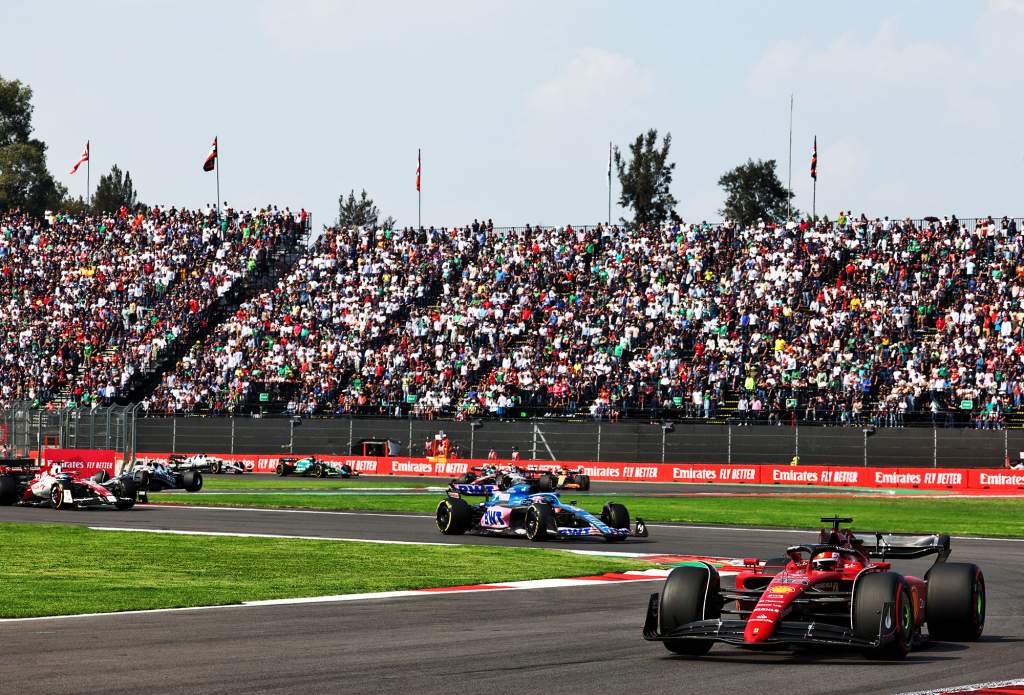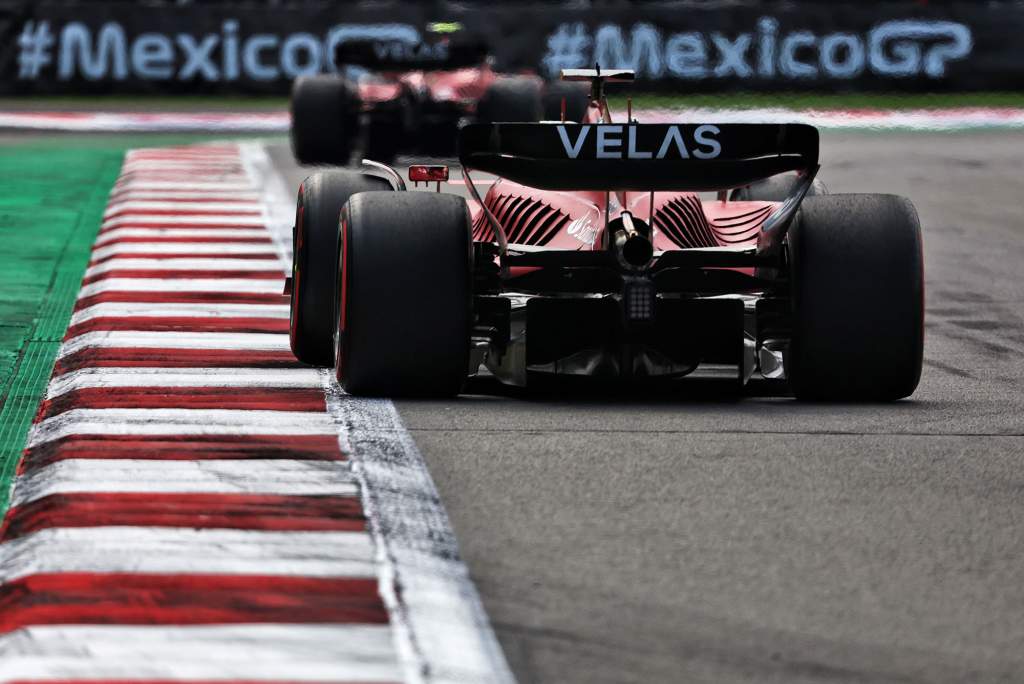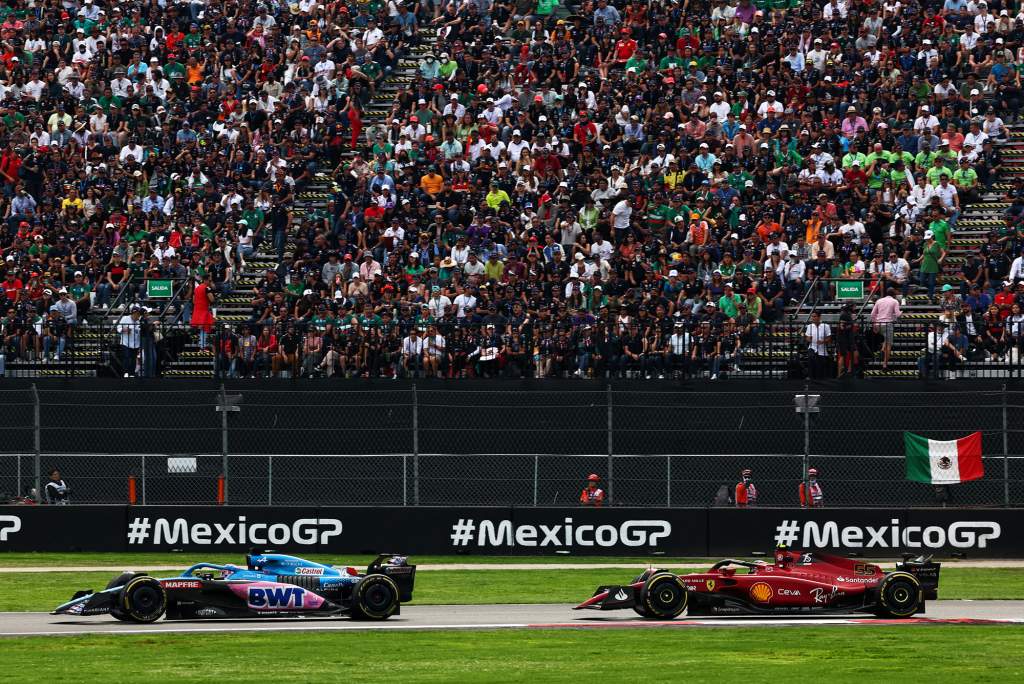Up Next

Ferrari hit its 2022 rock bottom at the Mexican Grand Prix two weeks ago when it had only the third-fastest Formula 1 car both on qualifying and race pace and didn’t pose a credible threat to Mercedes, let alone dominant force Red Bull.
Confidence is high within the team that it will be stronger in Brazil this weekend. But given how mad Mexico was, how much better is it realistic to expect Ferrari to be?
It’s important to remember that while Ferrari has struggled in the second half of the season, the F1-75 has nonetheless been fast enough to take pole position in three of the past five events and only missed out by a few hundredths of a second in Japan. That makes Mexico, where best Ferrari qualifier Carlos Sainz was pushing six-tenths off the pace in qualifying, a clear outlier.
That’s why Charles Leclerc is confident that, even if Ferrari will struggle to beat Red Bull at Interlagos, it won’t be a distant third best again.
“Yes, I cannot imagine them getting worse than that,” said Leclerc when asked by The Race if he expected Ferrari to be more competitive at Interlagos than Mexico City.
“I’m pretty sure it will be better here. We struggled with power unit performance in Mexico because of the altitude and we probably didn’t get the perfect balance either, which didn’t help.
“The combination of the two made us struggle a lot. I’m confident we’ll be better here.”

There are reasons to take what Leclerc says seriously. The altitude of the Autodromo Hermanos Rodriguez in Mexico City is approximately 2200 metres, which equates to a reduction in air density of in the region of 22%.
This exposed a weakness for Ferrari, which had to compromise its power unit performance as a result of the problem exposed by Sainz’s fiery failure in the Austrian Grand Prix. The Red Bull Ring is also at altitude, albeit less than a third that of Mexico, with Interlagos around 100 metres higher at around 760 metres. That equates to a reduction in air density of around 7.5%.
Ferrari has a smaller turbo than its rivals, which makes it more responsive as it requires less energy to spool up and has been an advantage in giving the car punch out of corners.
But at altitude, where the turbo has to work harder to compensate for the thinner air, it must work proportionately faster than the turbos used by Mercedes, Renault and Honda. At the Red Bull Ring, this led to Sainz’s failure, so in Mexico Ferrari had to compromise how hard it pushed the turbo, reducing engine performance.
But that wasn’t the only problem. As Leclerc explained, the set-up of the car wasn’t in what he called the “sweet spot”. That was reflected in an oversteering car that struggled to keep its tyre temperatures under control.

Ferrari team principal Mattia Binotto said after the Mexican Grand Prix that his team had other problems and promised detailed analysis of them all. Leclerc is confident this has paid off.
“There’s been quite a lot of analysis,” said Leclerc. “I believe we weren’t in the sweet spot of the car and that caused other problems. I won’t go too much into detail, it was just very tricky to drive.
“You lose a bit of confidence and then you lose a little bit here and there and that makes an accumulation that you just struggle more.”
Leclerc accepted part of that trickiness was self-inflicted. When The Race put it to him that the car was visibly looking difficult to drive through the sweepers in the middle part of the Mexico City lap because of the way it reacted to the kerbs, Leclerc conceded that was partly down to his set-up.
“Overall, I took an approach that was probably too aggressive for the race but also for qualifying, said Leclerc.
“That didn’t help but again I expect things to go better here.”
There’s good reason to expect Ferrari to resume normal service at Interlagos, even if the altitude is likely to hurt its power unit performance a little.
As a result, Sainz, who dismissed Mexico as a special case, has talked of taking the fight to Red Bull and Mercedes for podium finishes in Brazil and Abu Dhabi.
“We believe Mexico should be a bit of a one-off,” said Sainz. “We’ve never been so far off the pace in the dry all year, so it’s quite clear that we didn’t get it right in Mexico.
“It doesn’t matter if it was the engine, the car balance, the tyres, whatever, there was clearly something that wasn’t working.
“Now we focus on Brazil and Abu Dhabi, the last two races before the end of the season where we want to get the pace back, to fight on the podium with Red Bull and Mercedes.”

The trouble is that even if you set aside the unique circumstances of Mexico, the performance trend is not encouraging for Ferrari.
And that’s the problem. Ferrari could be back to normal at Interlagos, or at least close to it. Unfortunately, normal has been second or third-best in recent times for a team that has lacked the race pace to win since the August break.
Realistically, Ferrari needs at least Max Verstappen to hit trouble to have any chance of adding a fifth victory to its win tally for 2022.





